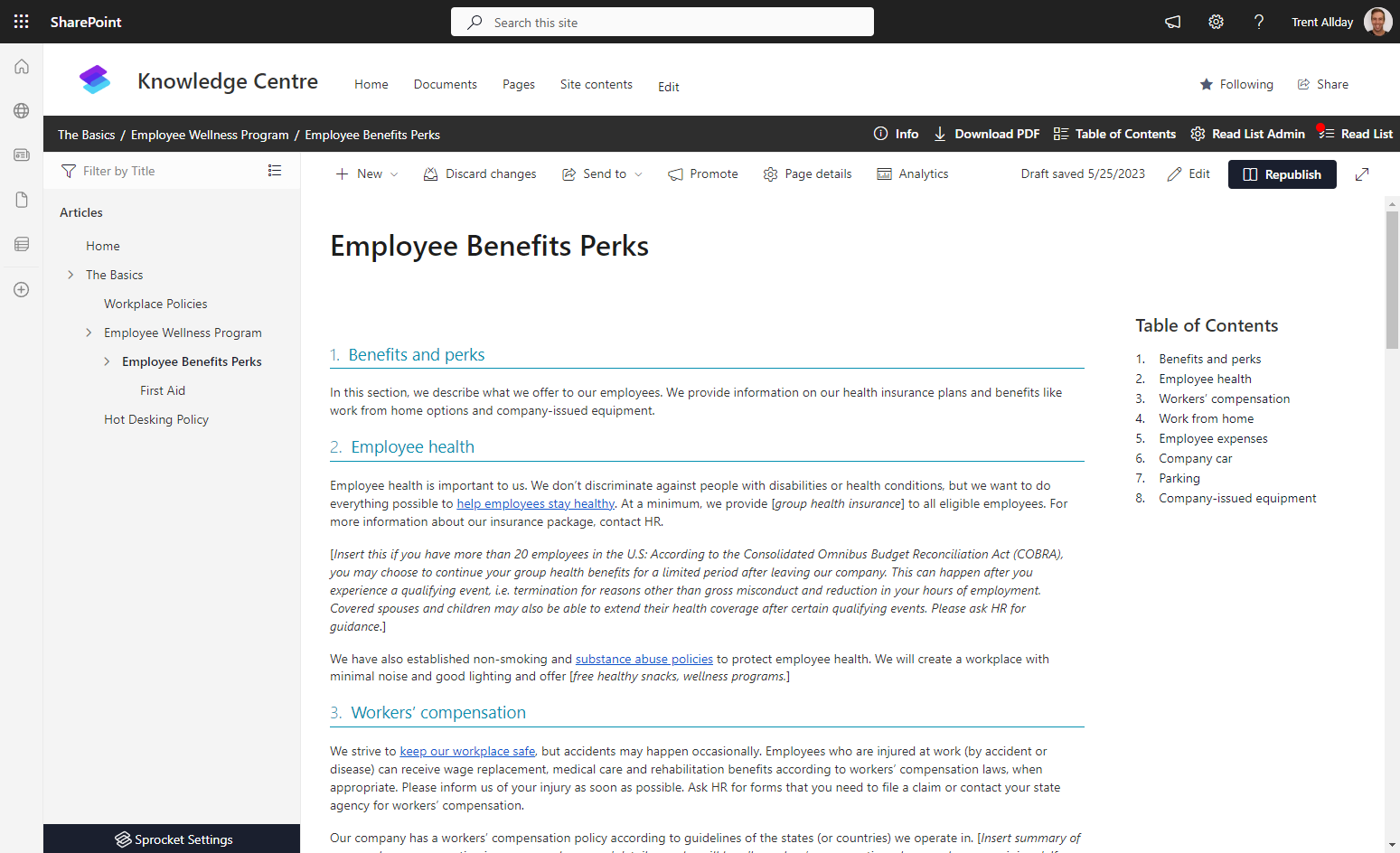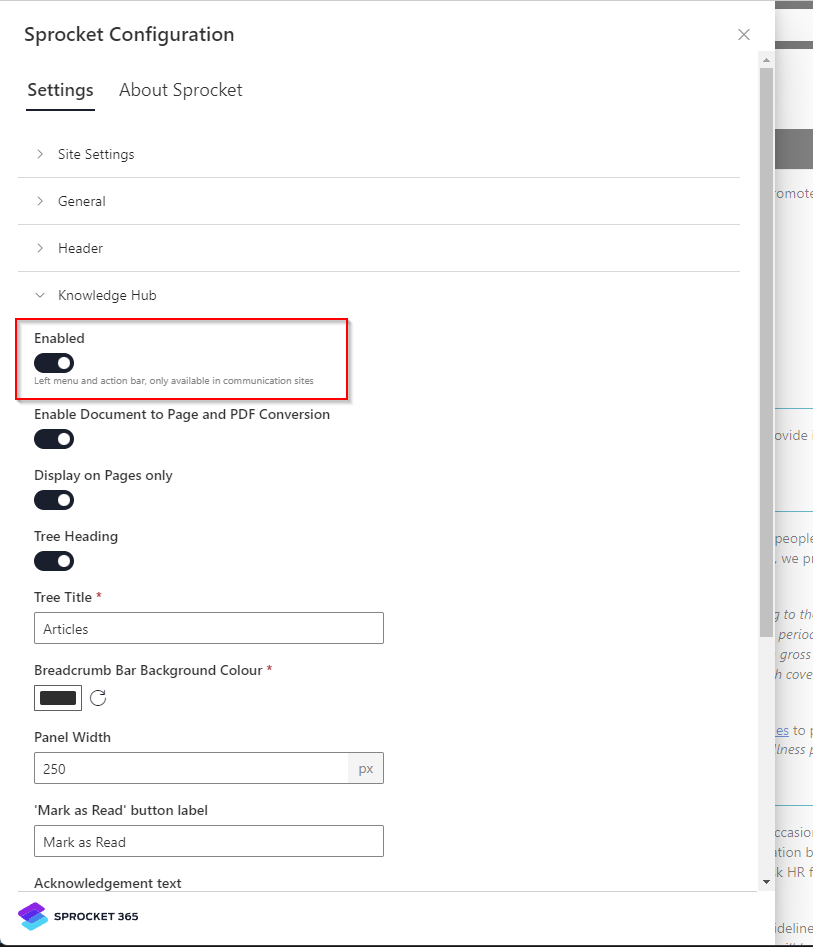Knowledge Hub
Knowledge Hub allows you to outline policies, document procedures, induct new team members and share knowledge, all while ensuring the information is only available when and where it should be. It also features trackable compliance, allowing you to ensure new team members are successfully onboarded and all workers are advised of policy and procedural updates. Featuring an intuitive navigation bar, table of contents, easy Word document conversion and recorded view data.

Features
- Drag and drop tree hierarchical navigation
- Context sensitive page display
- Navigation search
- Table of contents
- Word conversion to Page and PDF
- Compliance and auditing of pages
- 'Mark page as Read'
- Copy Link, Print Page, Download PDF
- Supported in both Modern Communication & Team sites.
Enabling Knowledge Hub
Team Site Support: SharePoint Team sites support both left navigation and top navigation. In order to enable Sprocket Knowledge Hub within a Team site you must ensure your Team site is using top navigation. More Info
To enable Knowledge Hub, do the following:
- At the bottom-left corner of your communication site, click the Sprocket icon.
The Configuration pop-up is displayed.
- On the pop-up, click the Settings tab and expand Sprocket Knowledge Hub section.
- In the Sprocket Knowledge Hub section, click the toggle button to enable Knowledge Hub.

Advanced Features of the Knowledge Hub
Once you configure the Knowledge Hub, you can configure the Left Hand Tree to manage pages in your site. Knowledge Hub provides the following advanced features:
Some of the configurations in this section can only be performed with advanced permissions.
Searching for Pages: Above the Left Hand Tree, you can enter a search keyword in the search field to find a page in the tree. If there are multiple matching pages available, all of them are highlighted in the Left Hand Tree.
| Configuration | Description |
|---|---|
| Drag and drop pages | You can click a page to drag and drop then anywhere in the hierarchy. Once you make a change to the hierarchy, click Save button to save your changes. |
| When you open a page the context sensitive Left Hand Tree displays the location of that page in the hierarchy. | |
| Add Placeholder Headers | On the Left Hand Tree, right-click on a page and select Add Header to add a placeholder folder. You can add pages in these and add URLs to be opened when you click on this. |
| Breadcrumb | On the breadcrumb, click the link to navigate to that page. |
| Info icon | On the breadcrumb bar, click the info icon to copy the page link, print page, or delete page. |
| From this icon, you can also see the word count, number of times the page was read, and the last modified date. | |
| Download PDF | Enables you to download the current page as a PDF file, to your local computer. |
| This options is displayed only if the KHPDF field in the Page details settings is set. For more information, see Page details. | |
| Table of Contents | The Table of Contents icon on the breadcrumb bar displays the headings in the page. |
| Read List | Displays the list of pages assigned to you to be read. From the list, you can select any page to read it. |
| This list displays the same list of pages that are listed in the Reading List web part. For more information, see reading list. | |
| Mark as Read | Click this icon to mark the current page as read. |
Read Checklist Webpart
Reading Lists enable site administrators and users to manage the list of pages to be read. Pages listed in the read check list are displayed for the users to be read. For more information, see Reading List).
Adding Related Pages
On the pages on your communication site, you can list other related pages for easy navigation. For this, In Page details settings, add Related pages. You can use Documents webpart to display the related pages on a page.
Adding Filters on a Page
In Page details settings, you can add any available field to display it as a filter on the page.
Adding Table of Contents
In addition to the SharePoint provided Table of Contents, you can add the Table of Contents webpart to display a customisable Table of Contents on the pages of your communication site.
Adding Other Webparts on Your Pages
On the pages of your communication site, you can add the following useful Sprocket webparts for convenient navigation and content reading:
| Webpart | Purpose |
|---|---|
| Alerts | Use this webpart to alert the users about the content on the page. |
| For example, you can use this webpart to indicate the content on a page is updated recently. For more information, see Alerts. |